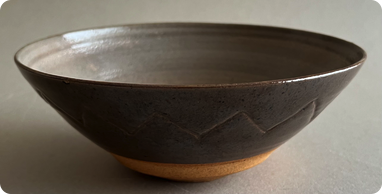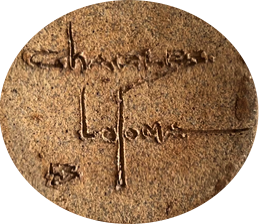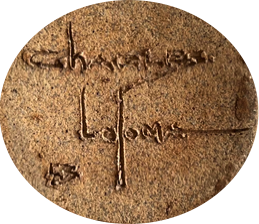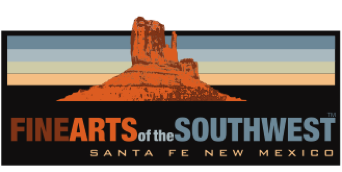
© 2010-2025 by Fine Arts of the Southwest, Inc. All rights reserved.
Unauthorized reproduction or use is strictly prohibited by law.
Years before he became a ground-breaking, world-renowned jeweler, Hopi artist Charles Loloma (1921-1991) was a highly-accomplished ceramicist. From 1947-1949, he and his then wife, Otellie Pasiyava Loloma (1921-1993) attended The School for American Craftsmen at Alfred University in New York on a scholarship and fell under the influence of the school’s exceptionally talented master ceramicist and pottery instructor, Lynn Lovejoy Phelan. Together, the Lolomas subsequently created and began making a revolutionary, never before seen and completely non-traditional Modernistic form of Hopi pottery which was strongly influenced by Japanese and Chinese methods and traditions. Loloma’s ceramics are quite rare and difficult to find in the marketplace today since there were never very many made
in the first place and they were only made for just a few short years, from 1948/49 through about 1959/60.
The unique attractiveness of Loloma’s pottery eventually got him into jewelry making in a somewhat circuitous and fascinating fashion. In the mid-to-late 1950’s, the Lolomas were operating a small pottery studio, shop and living quarters in Lloyd Kiva New’s Kiva Craft Center in downtown Scottsdale, Arizona which was a sort of artist’s co-operative combining living space, studio space and showroom space to a number of talented up and coming artists.
At that time, Charles and Otellie had already begun acquiring a considerable reputation for their distinctive “Lolomaware” ceramics and were starting to attract a considerable amount of attention at their small shop in the
Kiva Craft Center. One of those whose attention was fascinated was Loloma’s close neighbor and fellow artist at
Kiva Craft Center, the revolutionary American Modernist jewelry maker, H. Fred Skaggs, who was so taken with the Lolomas pottery that he offered to trade Charles jewelry-making lessons in exchange for pieces of pottery. In this somewhat unlikely manner, Fred Skaggs thus became Loloma’s mentor in jewelry-making and Loloma always later credited him with being the single biggest influence in his subsequent world-famous jewelry career.
“Our people have made pottery for generations, but it doesn’t stand up like modern chinaware…we hope to give it new life…by teaching our people about glazes…”
-Charles Loloma
At left, Kiva Craft Center, Fifth Street, Scottsdale, Arizona, c.1950's. At right, Charles and Otellie Loloma
in their “Lolomaware” pottery studio and showroom at The Kiva Craft Center, Scottsdale, AZ, c. 1956
Left photo source and © Scottsdale Historical Society. Right photo source and © Museum of Northern Arizona Photo Archives
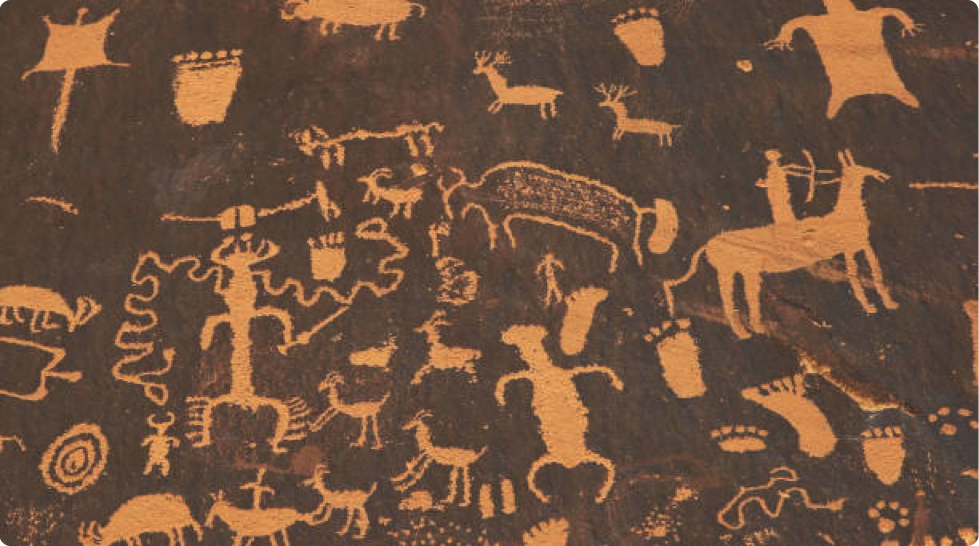
An ancient Southwestern Rock Art panel in Canyonlands National Park, Utah. Note the disctinct color and contrast similarties in this panel to the Loloma bowl below.
Photo source and © istock
Another highly influential pair of clients of the Loloma pottery studio were renowned American Modern Architect, Frank Lloyd Wright and his wife, Olgivanna Lloyd Wright who in addition to being important personal clients in their own right also introduced the Lolomas to many of their important private architectural clients such as the Price family of Oklahoma who owned a winter home in Scottsdale and whose patronage for pottery and later jewelry became very significant people in the Loloma’s orbit. As it also happens, there were a great many artistic and personal connections between the two men, the Wisconsin-born patrician Wright and the Hopi Loloma. Wright’s daughter, Frances Wright Caroe had been an instructor of the Lolomas at Alfred University in the late 1940’s and after the couple’s move to Scottsdale, two of the Loloma’s neighbors there in the Kiva Craft Complex were Wright-trained architects from Taliesin West, Wright’s architectural complex and winter headquarters nearby in Scottsdale.
The vessel is most beautifully and elegantly formed with a beautiful and dramatically raised coiled “start” at the bottom and rising upwards with graceful, thin, outwardly flaring upright walls with lovely, intentionally visible clay coils. The inside of the bowl is plainly done in a complex and lovely, creamy, greenish-grey-tan with overtones of beige and silver, almost “mushroom” colored glaze while the outside of the bowl is glazed on its uppermost three-quarters with a glossy, deep, dark chocolate browinsh-red glaze into which Loloma has inscribed a continuous undulating wave-like stylized version of a snake or "Horned Water Serpent" design. This is an age-old Hopi design of a being known as "Balolokan", The Water Serpent which is found on ancient rock art in the Hopi region, on ceremonial Hopi Kiva murals and on modern-era Hopi snake dance kilts. Not incidentally, one of the important ceremonial functions Charles Loloma performed at Hopi was that of a Snake Priest.
The lower quarter section of the bowl’s exterior is the unglazed medium-brown clay body of the bowl itself with a wonderful organic texture. The entire composition and construction here is so artfully done with an incredible visual and textural and color field sophistication somewhat reminiscent of a panel from the ancient Neolithic cave paintings of the Lascaux Cave in France or the extraordinary, also ancient rock art petroglyphs and pictographs of
the American Southwest many of which are native to Charles Loloma’s Hopi mesas birthplace and home. The overall level of virtuoso artistry and cultural awareness on display here is simply astounding, and, interestingly, very much like Southwest rock art panels of the same color palette, the bowl changes as the light around it changes.
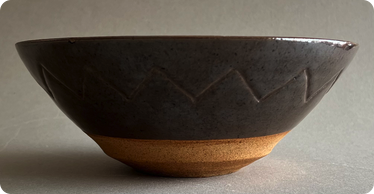
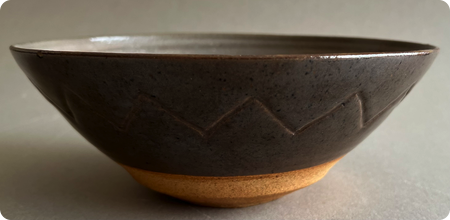
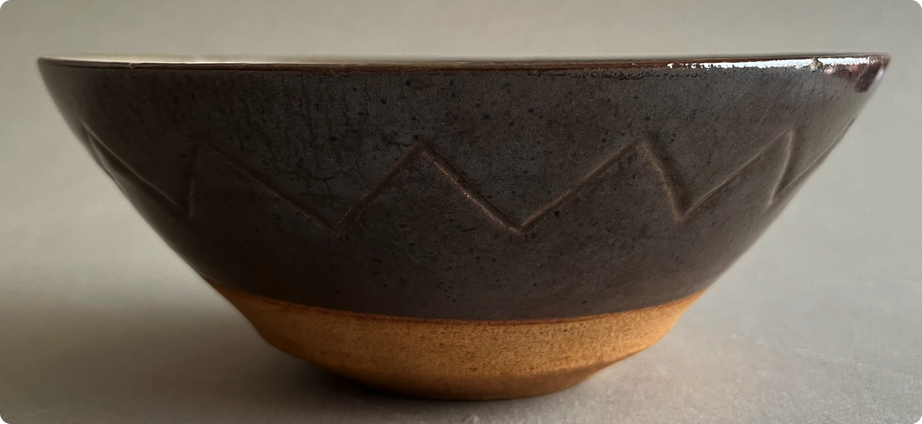
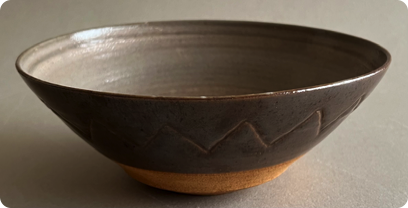
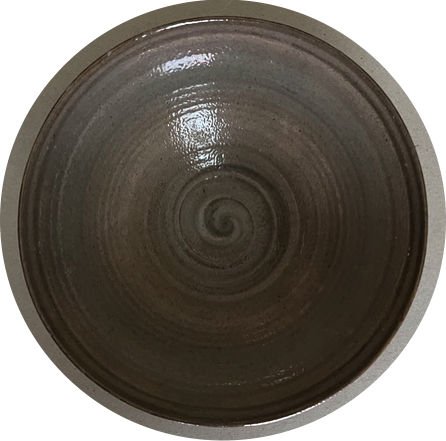
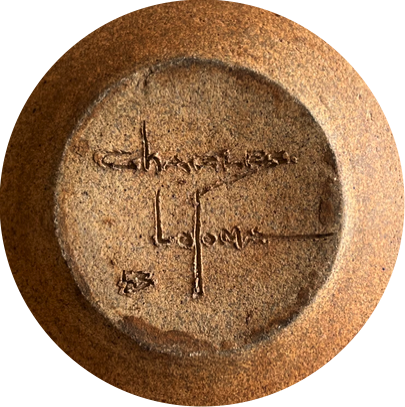
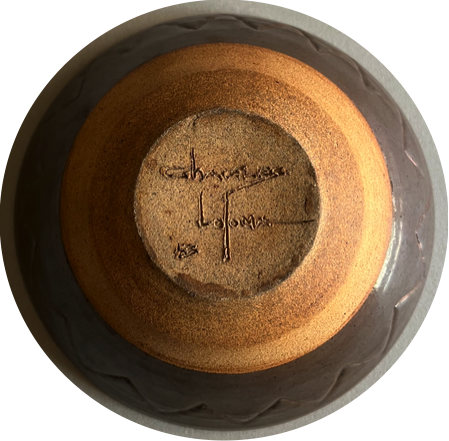
An early and extremely rare Charles Loloma Hopi glazed and incised ceramic bowl,1953
The bowl measures a very nicely-sized 9” in diameter and it is 3 1/2” in height. It is in completely excellent original condition, quite remarkably so for its present 72 years of age and it is formed and fired so finely that the bowl literally “pings” like fine porcelain when lightly tapped with a finger on one side. There are no cracks, no significant chips and no abrasions and a thorough examination of the vessel under Ultraviolet light reveals no restoration or overpainting in evidence anywhere. On very close examination, there are two extremely tiny, almost imperceptible, chips to the rim, which are of no particular consequence. We should all look this good at age 72. The bowl is beautifully and very artistically and elaborately signed and dated by the artist on the bottom as shown below.
“Charles Loloma '53”
This exceptional, elegant, rare, early bowl is one of America’s greatest modern art ceramics made by one of
America’s greatest modern-day Native artists. As such, it’s an unparalleled piece of pure artistry and unique Hopi
art history, a coveted prize for any art collector and collection anywhere.
SOLD
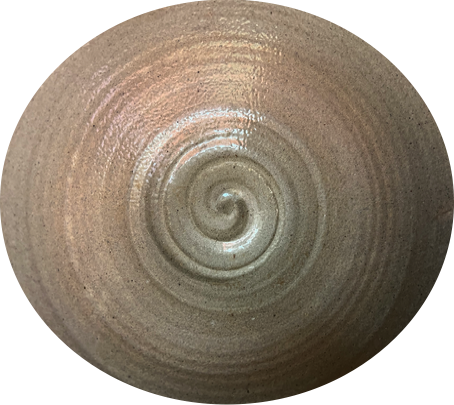
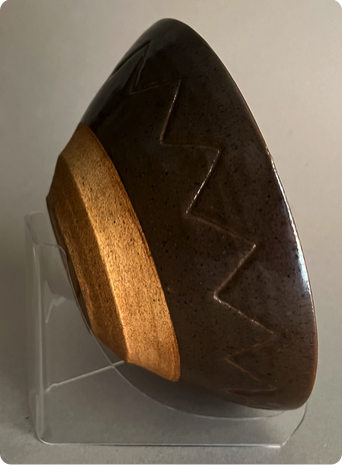
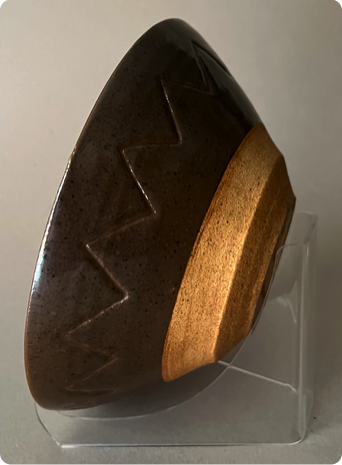
The various glazes Loloma used in making this bowl are a subtle, sophisticated and harmonious palette of creams, greens, greys and tans on the inside and deep brown-reds outside. The bowl’s lower surface has a wonderful, slightly rough texture alternating and forming a lovely subtle visual contrast with the more smoothly-glazed upper exterior panel. Under Lynn Phelan’s careful tutelage at Alfred University, Loloma had learned to be extremely meticulous regarding the formulation of his various glazes and paints going to great and detailed efforts to mix the various compounds and minerals precisely to achieve a large variety of different surface textures and colors. We had the occasion a number of years ago to closely examine Loloma’s early studio notebooks which he maintained studiously throughout most of his career and there were pages and pages devoted to precisely detailed glaze formulations and pottery firing chemical compounds and clay mixtures.
The overall visual effect here with this bowl is extremely organic and natural with a distinctly modern, yet completely classic and timeless presentation, somehow ancient and strikingly modern at the same time. It’s a particularly masterful, magical, subtle and well-made piece. As an interesting aside, this is precisely the type of Loloma ceramic piece that would later strongly inspire Loloma’s talented Hopi ceramic student, Polingaysi Qoyawayma, or Elizabeth Q. White, to make her own unique versions and interpretations of modern Hopi plainware ceramics.

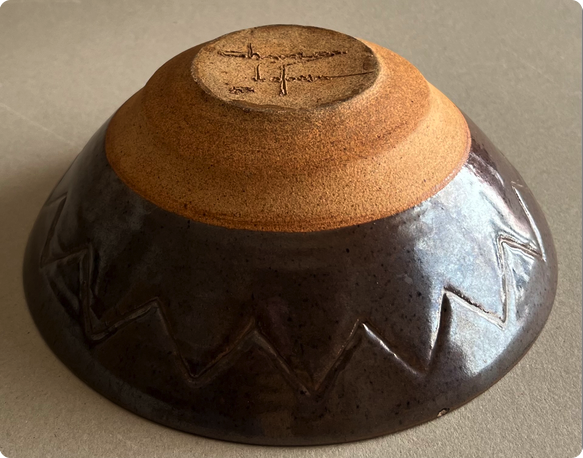
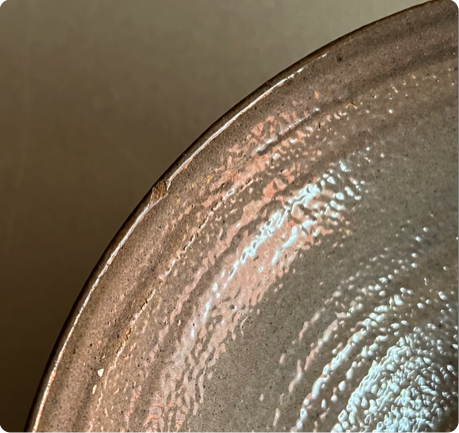
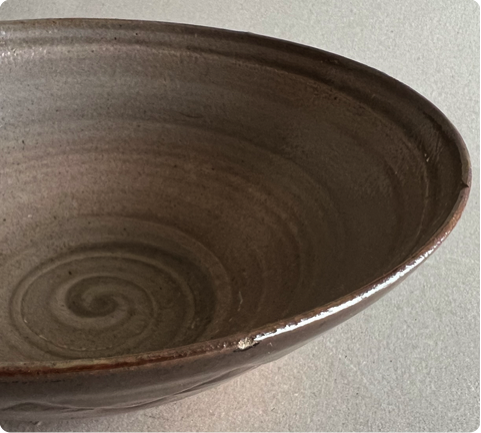
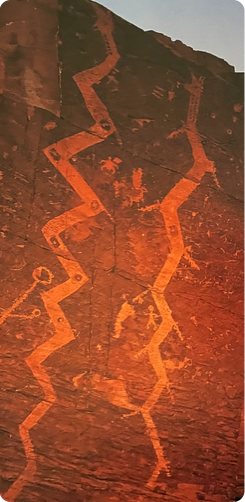
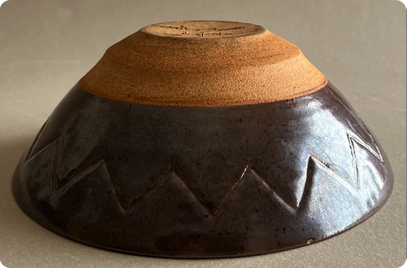
Above center, the Pueblo water serpent, which the Hopi refer to as "Balolokan" pictured in an ancient Southwest rock art panel. At lower left, a similar Charles Loloma ceramic bowl also dated 1953 in the Collection of the California Academy of Sciences, San Francisco. Note the color similarities between the rock art panel and the Charles Loloma bowls.
Above center photo source and © "Images in Stone" by David Muench, BrownTrout Publishers, Inc., San Francisco, pp. 148.
Lower left photo source and © "Loloma Beauty is his Name" by Martha Struever, Wheelwright Museum of the American Indian, Santa Fe, NM, 2005, pp. 42.
